| Skip Navigation Links | |
| Exit Print View | |

|
Sun Server X2-8 (formerly Sun Fire X4800 M2) Installation Guide for Oracle Solaris Operating System Sun Server X2-8 (formerly Sun Fire X4800 M2) Documentation Library |
| Skip Navigation Links | |
| Exit Print View | |

|
Sun Server X2-8 (formerly Sun Fire X4800 M2) Installation Guide for Oracle Solaris Operating System Sun Server X2-8 (formerly Sun Fire X4800 M2) Documentation Library |
Introduction to Oracle Solaris OS Installation
How to Erase Your Boot Hard Disk
Solaris OS Installation Task Map
Choosing an Installation Method
Obtaining Solaris 11 Documentation
Obtaining Solaris 10 Documentation
Identifying Logical and Physical Network Interface Names for Solaris OS Installation
This procedure creates a virtual disk where you can install the OS. It uses Manual Configuration to create a virtual drive using only one hard drive.
This is only one of many possible RAID configurations. To install a different RAID configuration, refer to the SGX-SAS6-R-REM-Z: Software User's Guide, available at: http://www.lsi.com/sep/Pages/oracle/sg_x_sas6-r-rem-z.aspx
The Launch Redirection screen appears.
The Adapter Selection screen appears.
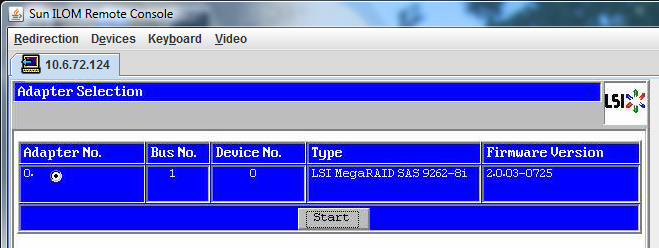
The MegaRaid BIOS Config Utility Virtual Configuration screen appears.
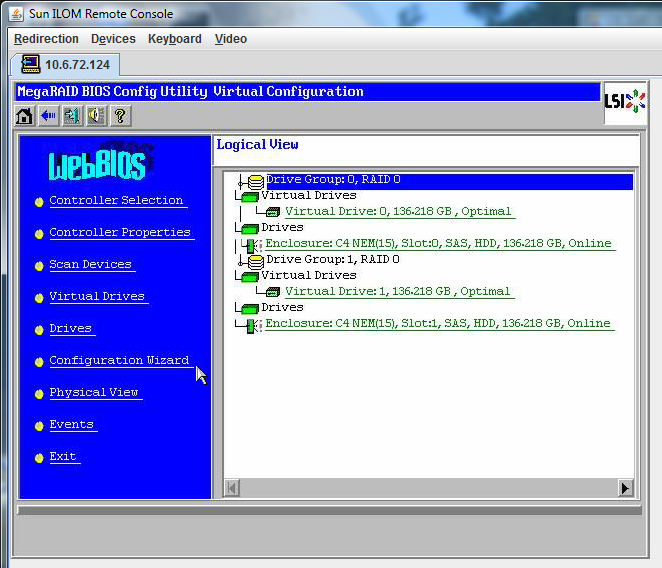
The MegaRaid BIOS Config Utility Virtual Configuration Wizard screen appears.

The Select Configuration window appears.
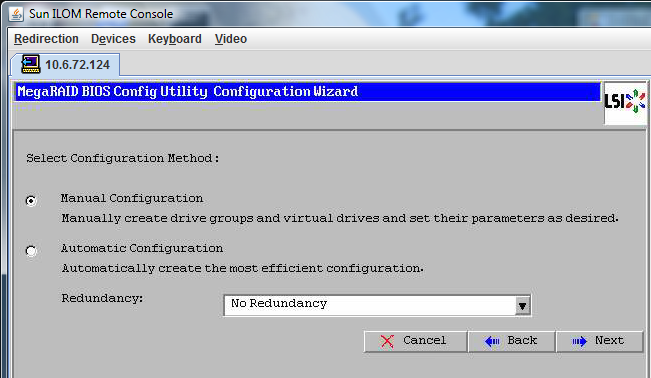
Automatic Configuration creates a single virtual drive that combines all the hard drives on your system into a single virtual drive with all data striped across all the drives.
The rest of this procedure uses Manual Configuration to create a virtual drive using only one hard drive. This is only one of many RAID options. To configure different RAID options, refer to SGX-SAS6-R-REM-Z: Software User's Guide available at http://www.lsi.com/sep/Pages/oracle/sg_x_sas6-r-rem-z.aspx.
.
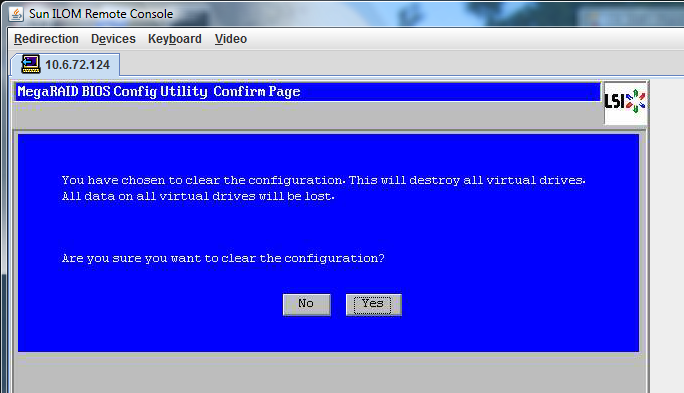
The MegaRAID BIOS Config Utility Config Wizard – Drive Group Definition screen appears, showing the drives in the system and the drive groups.
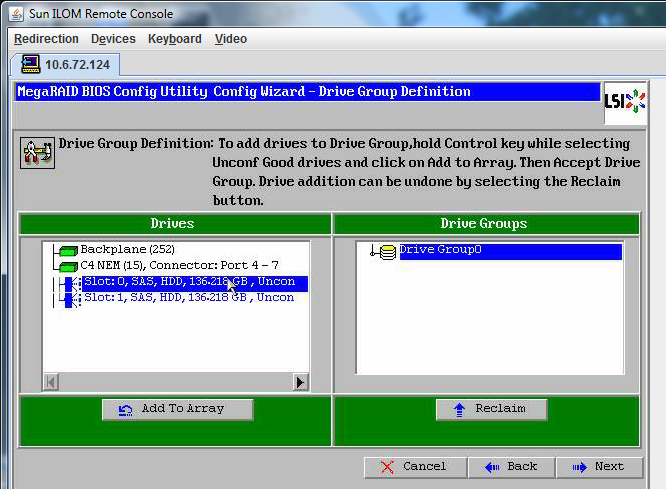
You can now view Drive Group 0.
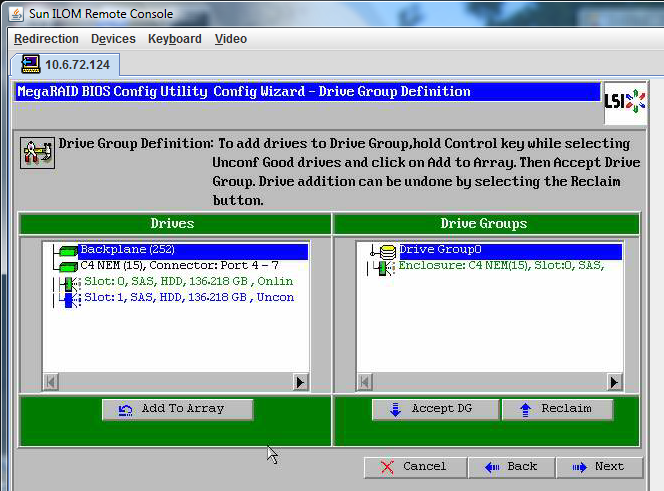
Note - You can undo the drive group selection by clicking the Reclaim button.
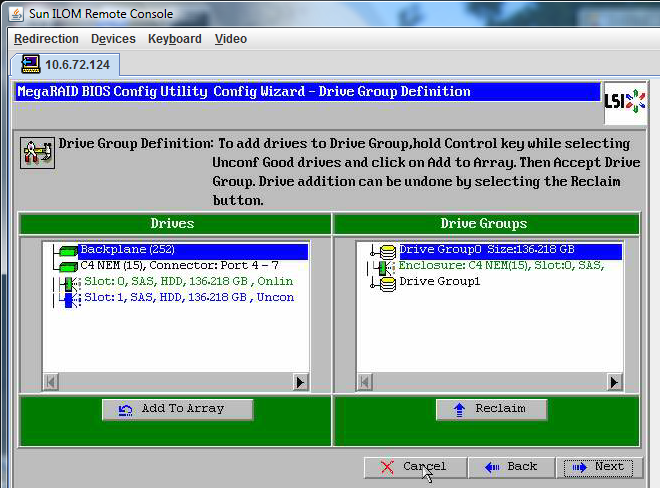
The drive group appears in the Span Definition window.
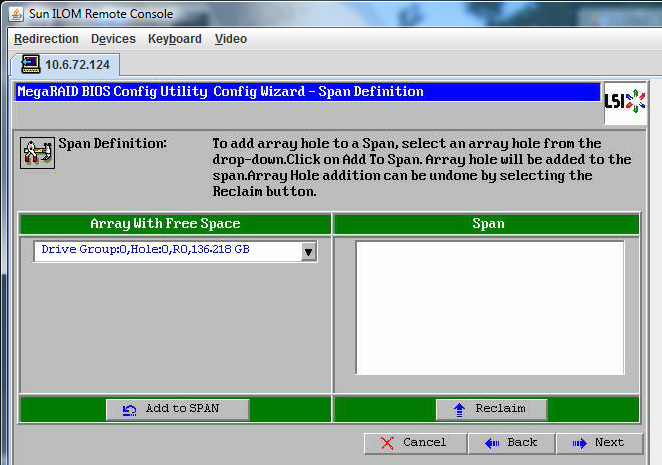
The drive group appears in the span.
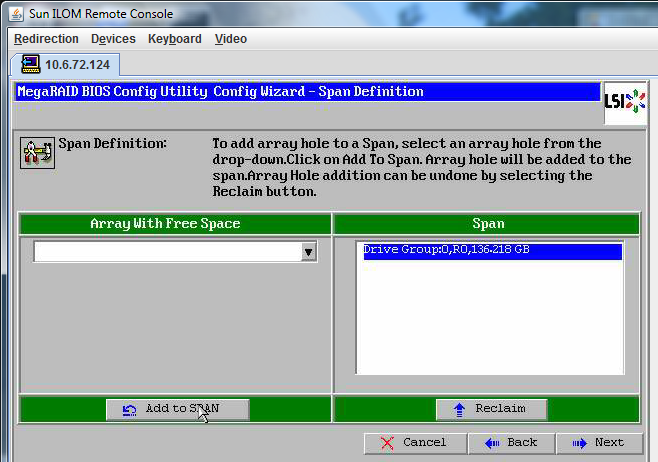
The Virtual Drive Definition screen appears.
For more information about configuring RAID, refer to your server's disk management documentation.
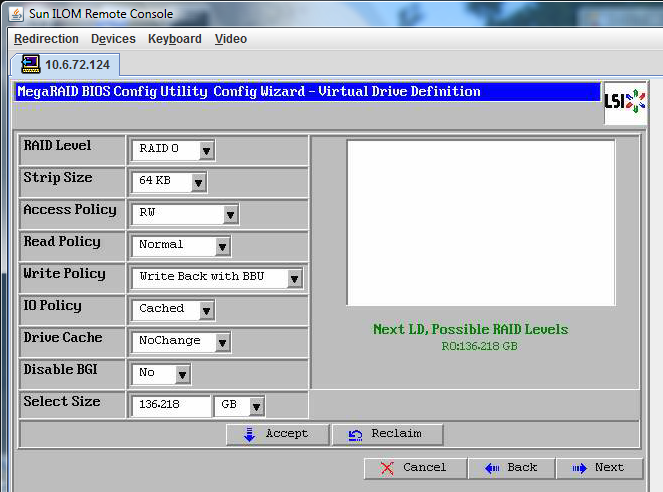
The system prompts you to confirm Write Back with BBU mode.

The Config Wizard— Virtual Drive Definition window appears.
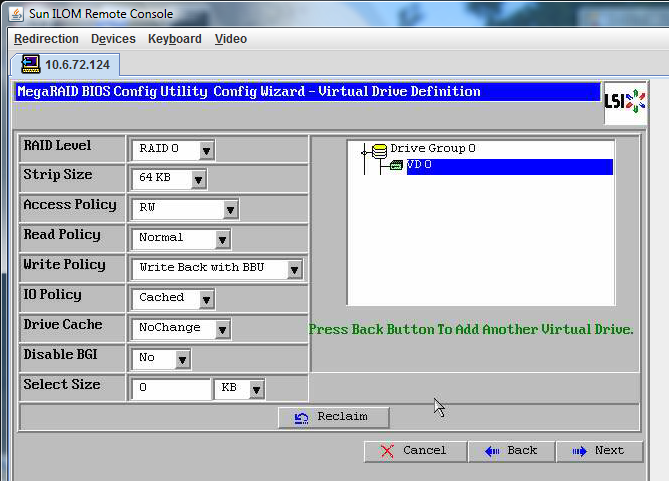
The Preview screen appears.
The example graphic shows a single virtual drive using the Manual Configuration option, then click Accept.
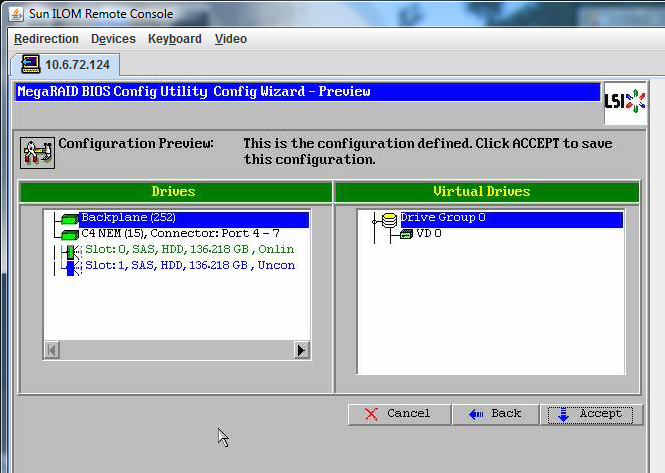
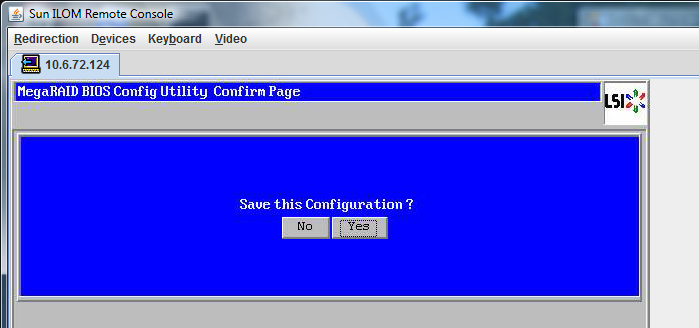
The prompt appears: All data on Virtual Drives will be lost. Want to Initialize?
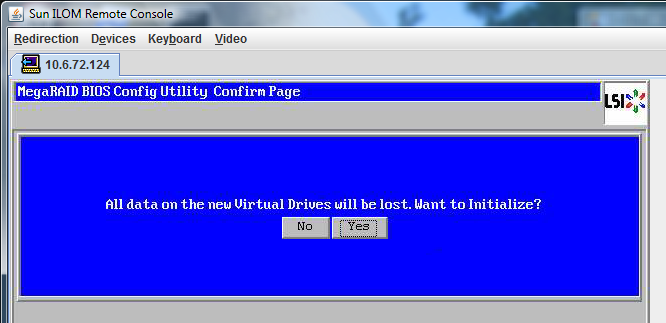
The Virtual Drives list appears.

The MegaRaid BIOS Config Utility Virtual Configuration screen appears.

The system reboots.
See Also